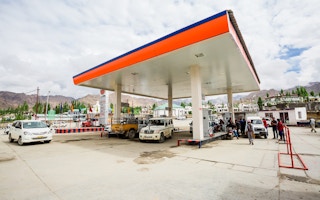The evidence of a series of new studies shows that climate change is keeping the gurus guessing.
Even when the grasslands become hotter and drier, the grass may still be green. And when summer temperatures rise and yields fall, it isn’t just because heat takes a toll of the crops, it is also because the farmers have decided to plant less, and plant less often.
As economies slump, demand drops and oil prices plummet, then carbon dioxide emissions, paradoxically, start to soar again.
And, against all intuition, you shouldn’t recharge an electric car at night when prices are low, because that could increase greenhouse gas emissions.
Each study is a reminder that climate change is not a simple matter of atmospheric physics. The wild card, every time, is how people, plants and animals react to change.
Climate simulations
Koen Hufkens, an evolutionary biologist at Harvard University, and colleagues decided to take a look at how the North American grasslands – the high plains, the prairies, the open range – would respond to climate change.
The predictions have been consistent: such places that are already dry will, on the whole, get drier.
But a report in Nature Climate Change by the Harvard team says that their climate simulations of locations from Canada to New Mexico, from California to Illinois, tell another story.
Warming may not mean overall lower productivity. In a warming world, winters will be milder and the growing season will begin earlier. So, overall, the grass stays green.
“You have an earlier spring flush of vegetation, followed by a summer depression where the vegetation withers, and then, at the end of the season, you see the vegetation rebound again,” Dr Hufkens says.
Meanwhile, in Spain, scientists at Jaume I University in Castellón decided to look at the link between air pollution and economic performance in Spain between 1874 and 2011. With economic development, levels of contamination rose. As Spain’s wealth increased, so did concern about pollution – and carbon dioxide emissions began to drop.
They report in Ecological Indicators journal that they then matched their data against the international price of oil and found that when the price fell by 1%, carbon dioxide emissions went up by 0.4%. When the price of oil rose, the levels of emissions fell in the same proportion.
The implication is that if the price at the petrol pumps is lower, the mileage goes up. The scientists recommend “a cautious tax structure that would reduce overall consumption of fossil fuels and promote the use of cleaner and more efficient energies”.
That climate change will affect future food production is not disputed. Avery Cohn, then of Brown University but now assistant professor of environment and resource policy at Tufts University in the US, and colleagues report in Nature Climate Change that they tried to estimate what global warming would bring to the Brazilian state of Mato Grosso, which in 2013 produced 10% of the world’s soybeans.
They looked at changes in rainfall and temperature between 2002 and 2008, and concluded that a 1°C rise in average temperature would produce a drop of between 9 per cent and 13 per cent in the overall yield of soy and corn.
But they also looked at satellite data, to give a more precise picture of what was happening, quite literally, on the ground.
They found that the total area under harvest, and the number of instances of double cropping, both fell with rising temperatures. So although climate change contributed to a drop in yield, the biggest factors were the decisions of the farmers.
Agricultural frontier
“This is an agricultural frontier in the tropics in a middle-income country,” says Leah VanWey, professor of sociology at Brown University, and a co-author of the report.
“This is where the vast majority of agricultural development is going to happen in the next 30 to 50 years. So understanding how people respond in this kind of environment is going to be really important.”
Meanwhile, a team at Carnegie Mellon University decided to examine a simple assumption: that it would be better to charge electric vehicles at night, when demand is low and electricity is cheapest to generate.
They report in Environmental Research Letters that they looked at what actually happened in one power grid area and concluded that, although vehicle owners might save money, the costs to society were considerable.
“We found that charging late at night reduces power generation costs by a quarter to a third, largely by shifting to cheaper coal-fired power plants,” says Jeremy Michalek, professor of engineering and public policy at Carnegie Mellon.
“But the extra emissions released as a result can cause 50 per cent higher costs to human health and the environment. In nearly all US regions, charging later at night increases greenhouse gas emissions.”










